Step 1: The Column Graph
Not a lot of people are aware of the fact that Illustrator has a tool for generating graphs. While being very useful, the graphs it generates are not really visually interesting…

But let me first introduce you to the basics of this tool. You’ll find it on the tools panel just below the symbol tools. Click and hold the left mouse button over it, and it will reveal the list of all graphs it can create for you.
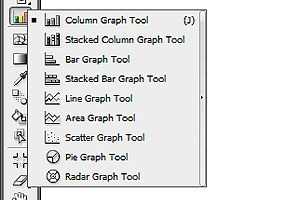
As you can seethere is a pretty big list of graphs you can generate. In this tutorial I’ll talk about three most popular types: column graph, pie graph and line graph.
So now, please select the Column Graph Tool and draw your first graph.
Step 1.1
After drawing the graph you’ll be greeted with a window that resembles a spreadsheet. Well in fact, it is a spreadsheet Just input some numbers in a horizontal fashion and click OK.
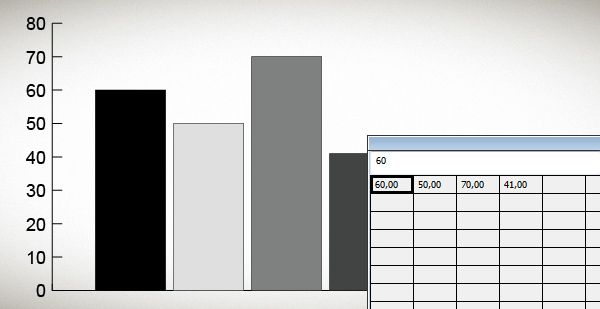
Step 1.2
We’ve got our first graph on the screen, now it’s time to give it some style. I’ll show you how to draw a shape which we’ll later use as a graphic style for the columns.
Close the spreadsheet and hide the layer with the graph, you won’t need it right now. Create a new layer, draw a square on it and fill it with a gradient (#DBF9FF to #00BCE0, angle: -137).
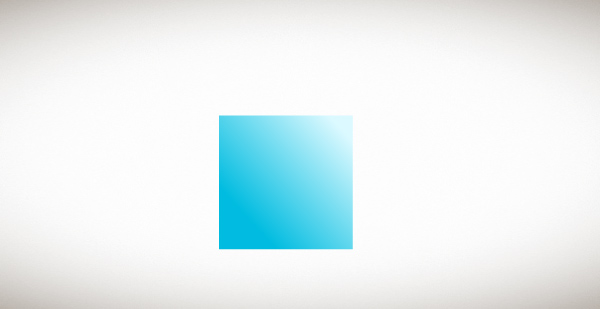
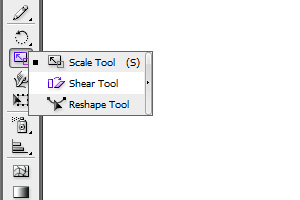
Copy the square, and double click on the shear tool (you’ll find it under the pencil and rotate tool) to shear the object 55 degrees horizontally.
Position it like in the picture below. Then draw a straight line as indicated in the picture. Select both, the sheared square and the line, go to Pathfinder and use the Divide option.
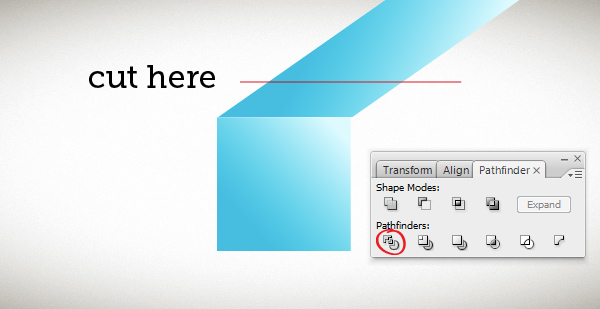
Delete the unnecessary part of the rectangle, play with the gradient settings (I just changed the angle) and you’ll be left with that:
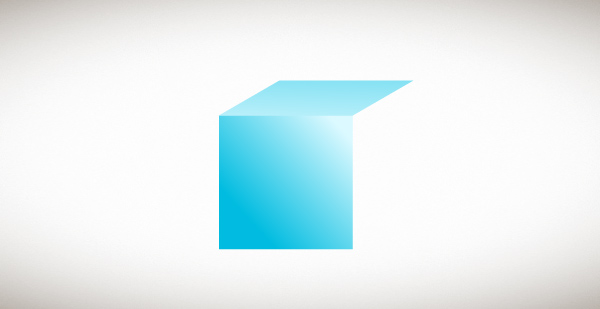
To create the third wall, you need to draw a newrectangle, turn on the Smart Guides option (ctrl/cmd+U), copy the top wall of the cube and align it with the bottom of the front wall.
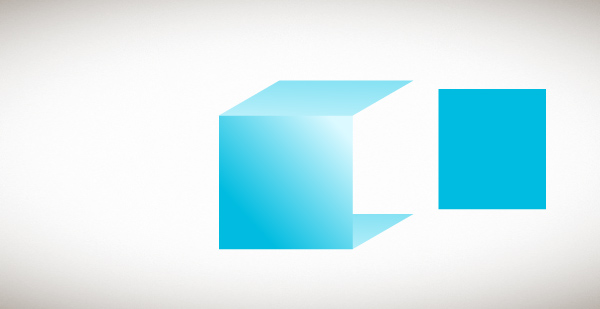
Then using the Smart Guides snapping feature, position each corner of the rectangle as indicated below.
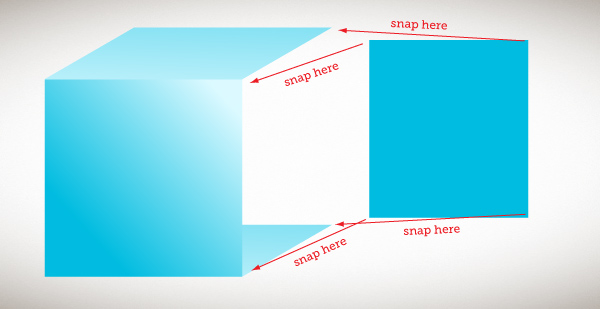
You should get something like in the picture below. Delete the lower part of the cube, we won’t need it any more, and give the new wall a dark blue gradient (Irecommend using the Edit Colors option in the Color Guide panel for this).
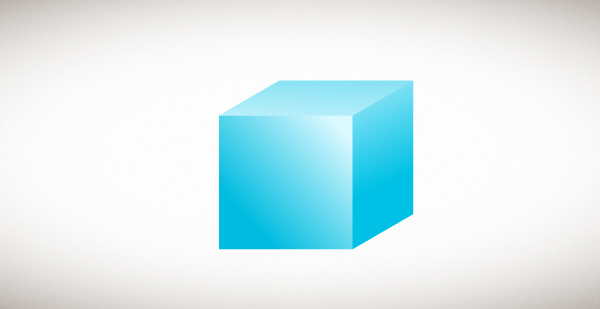
To fake the cubestransparency we need to copy the front side and align it like in the picture below.
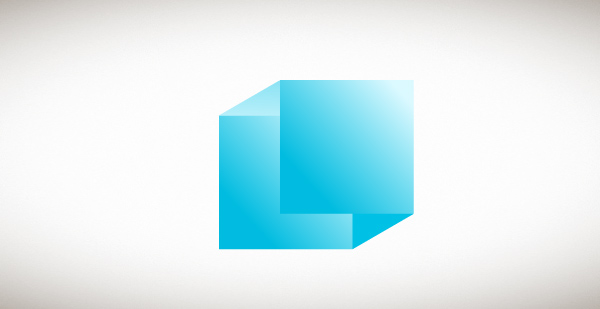
Now give the rectangle a pure white to dark blue gradient (#FFFFFF to #00B0D8, angle:0). Go to the Transparency panel, turn on the Multiply mode and lower the rectangles opacity to 20%.
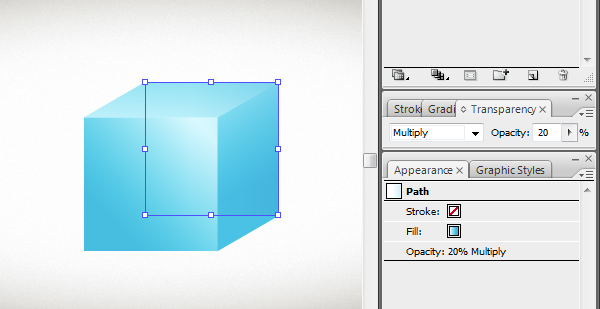
In this step we’ll give some contrast to the cubes edges by drawing white strokes over them. So grab the pen tool and draw 1 pt thick strokes over the edges and adjust their opacity like in the picture below.
Now we’ll add a shine on the corner of the cube. To do so, take the Star Tool and draw a 4 pointed star. You can change the number of points by pressing up or down on your keyboard while you are holding the left mouse button. Position the star like in the picture and give it 80% opacity,
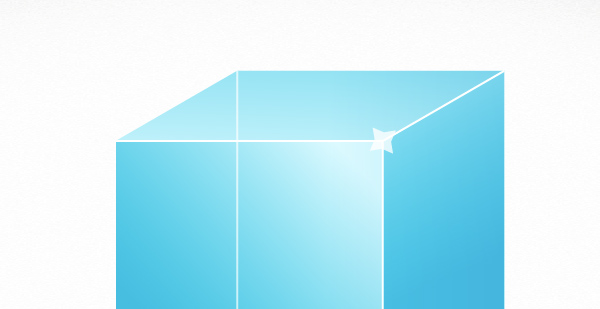
To add final touches to the star, draw two triangles with the Star Tool. Do it like in a previous step, just reduce the number of points to 3 by pressing the down arrow.
Position the triangles like in the picture. Select the bottomcentre points of each rectangle and delete them. Then put the triangles closer to one another. Select two rightmost points of each triangle, right click and select Join, do the same for two leftmost points. Then scale the joined triangles to get a thin pointy shape.
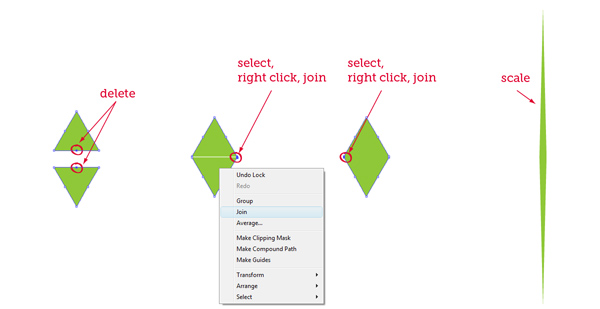
Duplicate the pointy shape. Give both shapes white color and position them like below.
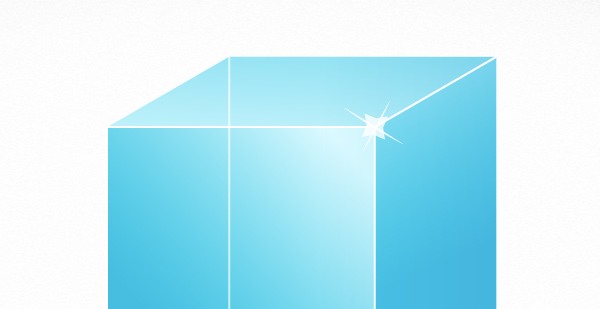
Step 1.3
Style for the columns is ready. Now we need to take care of the most important part. Applying and configuring the graph design in Illustrator. There are four ways in which you can apply the style to a bar graph. Vertically scaled, uniformly scaled, repeating and sliding.
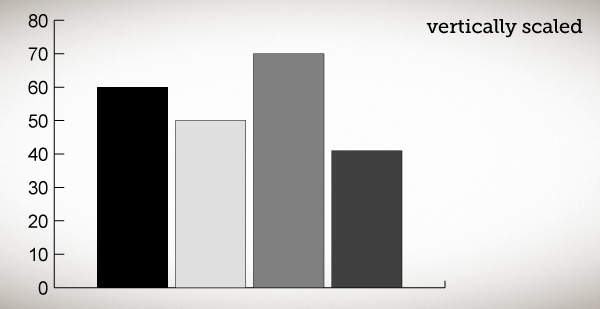
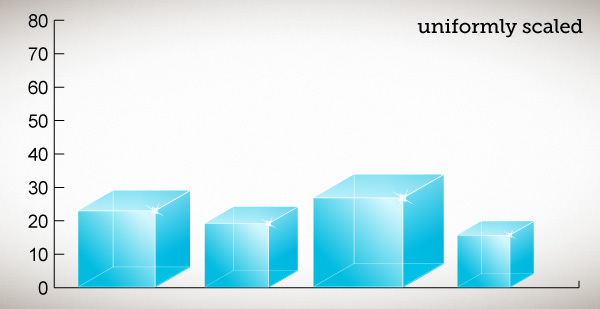
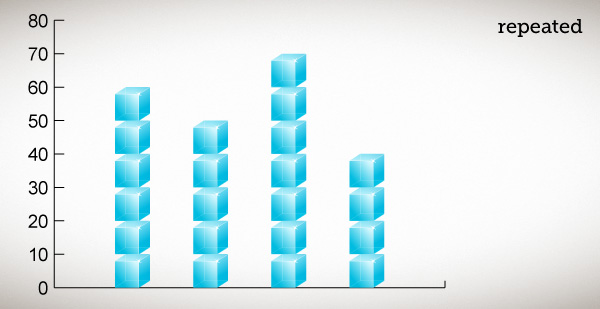
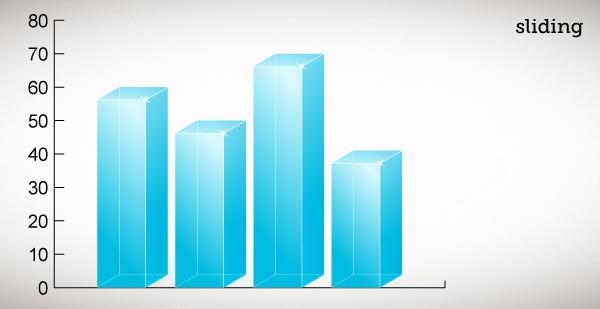
Now you’re probably wondering why didn’t I show the newly created style with the vertical scaling option? Let me show you.
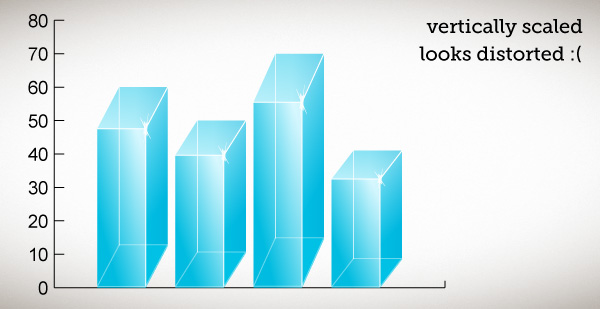
Looks pretty bad… When dealing with more complicated column designs it’s always better to use the sliding option because it enables you to specify which part of design you want to scale and which you want to leave unscaled.
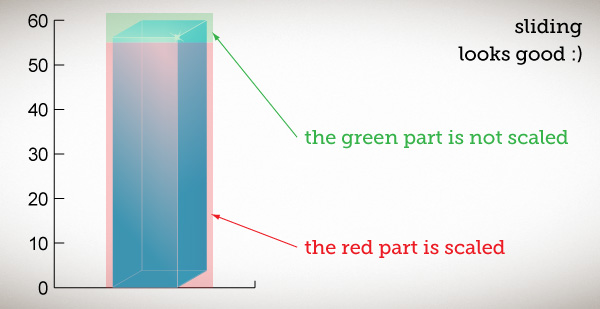
As you can see it looks good. Now let me show you, how you can prepare a design to be scaled this way.
Step 1.4
Lets get back to the cube we created a few steps earlier. To make our design scale properly using the sliding option we need todraw two things.
1. A rectangle which will indicate the boundaries of our design
2. straight line to define which part of the design will be stretched.
Draw the rectangle and the line just like you see them below:
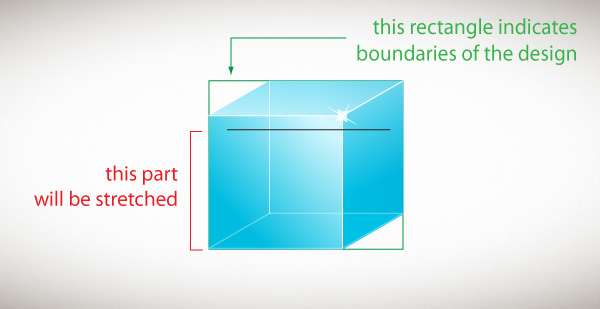
Now group everything (ctrl/cmd+G). Go to the layers panel and put the boundary rectangle at the very bottom of the group (this is very important!), the rectangle shouldn’t have any fill or stroke, so turn them off.
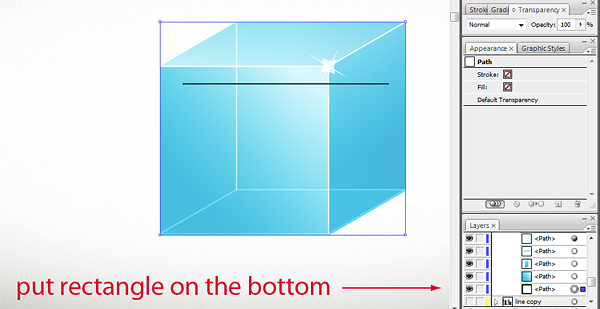
Select the black line with the Direct Selection Tool. Go to View>Guides>Make Guides or press ctrl/cmd+5. We need to convert this line into a guide or else it won’t work. This is the only way to show the Illustrator where to stretch the design.
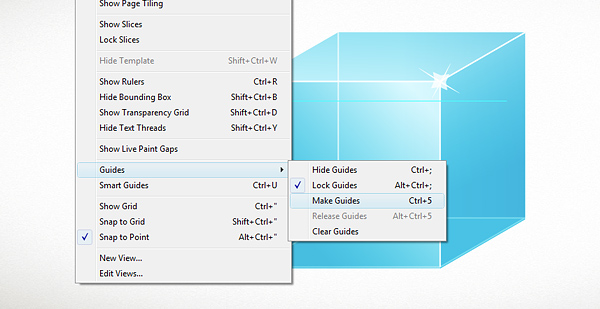
Now uncheck View>Guides>Lock Guides. It’s just for convenience, if the guides have been locked you wouldn’t be able to move the guide we just created.
Step 1.5
Select the group, go to Object>Graph>Design and click "New Design". Your design is now ready to be applied to the graph . You can also rename it by clicking the "Rename Design" button.
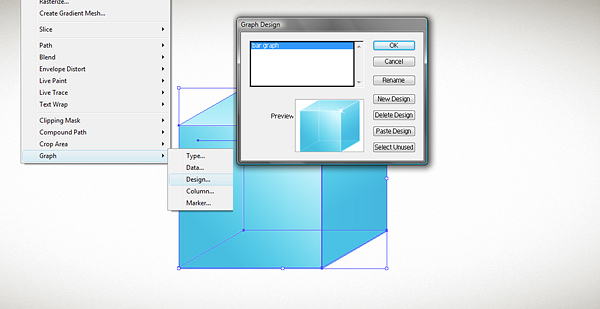
Delete the cube from the page area, make the graph we created earlier visible again and select it. Then go to Object>Graph>Column, select your design from the list, and choose Sliding from the drop down menu. Click OK.

Your graph should look similar to this. If your columns seem to be too wide, change the Column Width parameter in Object>Graph>Type.
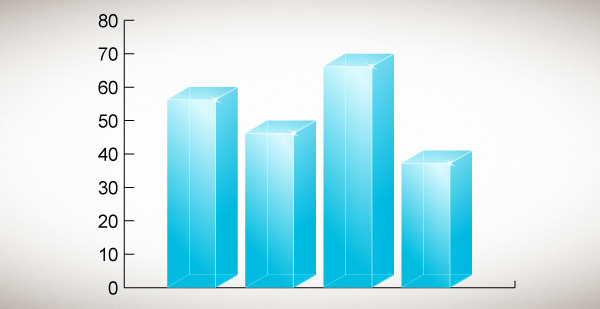
Creating graph designs may be a complicated task. If you can’t do it, justdownload the source files. You’ll find a ready made column design outside of the artboard in "bar_final.ai".
In this last step I added a few touches. I made some lines invisible, and changed the font. I also added the orizontal lines by using the Tick Marks option in Object>Graph>Type>Value Axis.
The graph is ready, and what is the most important, it’s editable, you can change column values or add newvalues to the spreadsheet and it will work just fine.
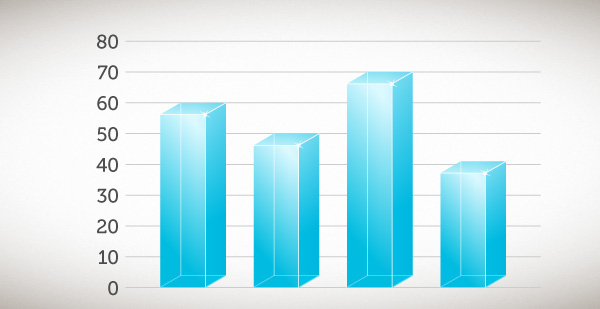
It’s worth noting that design we created will also work withdifferent types of graphs:Stacked Column Graph,Bar Graph and Stacked Bar Graph.
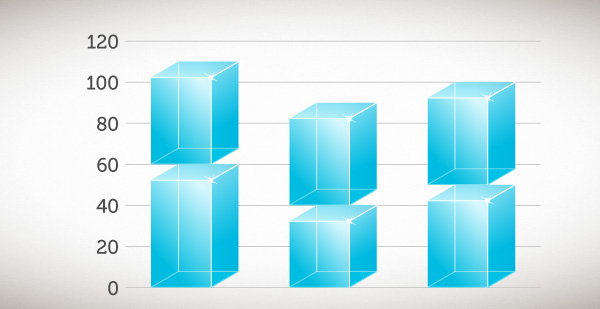
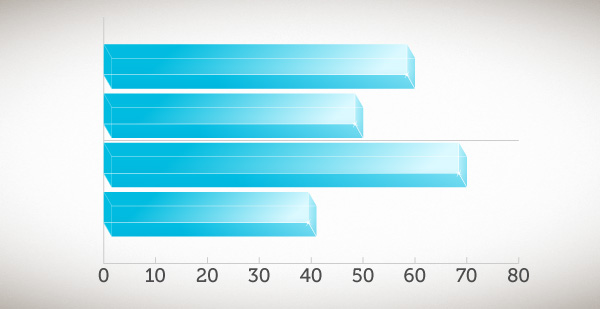
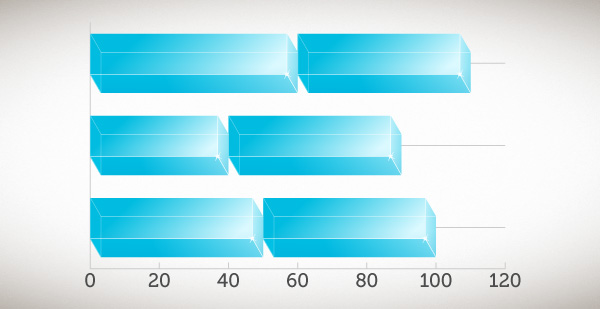
Step 2 The Pie Graph
In this step we’ll try to get some nice glossy reflections on the pie graph.We’ll be using advanced 3D and lighting options, so don’t worry if things will get slow on your machine.
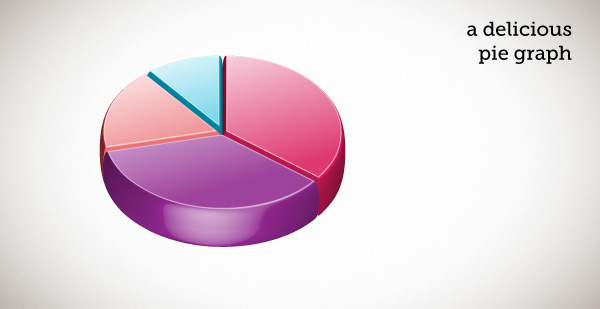
Take the Pie Graph tool, draw a new pie graph and input some numbers into the spreadsheet.
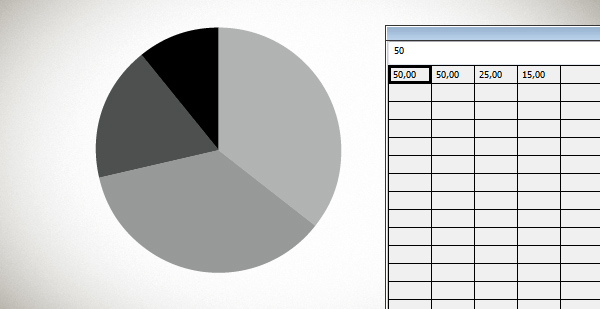
The following steps will be very processor intensive. If your computer is slow, you may have to wait a few minutes before the 3D effect renders. If it doesn’t, click "Stop", exit the "3D Extrude & Bevel" option and try again.
You can also decrease the "Blend Steps" parameter in the light settings. This parameter directly affects the quality and speed of rendering (the lower the faster but with less quality).
Step 2.1
Give the graph some colours, then go to Effects>3D>Extrude and Bevel and input values from the picture below.
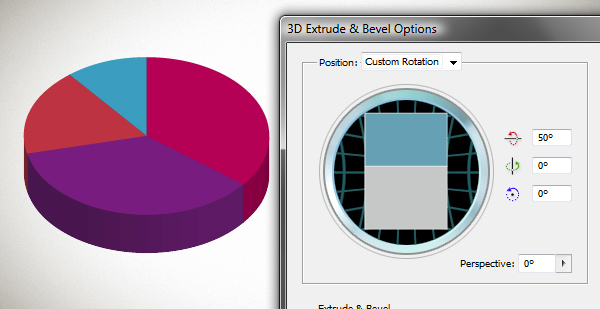
To create nice reflections on our graph we need to round its edges by using the Rounded Bevel option from the Bevel drop down menu. Adjust the bevel to 4 pt height and make it Extent in. It is also essential to select the Plastic Shading, this is the option responsible for rendering lighting reflections.
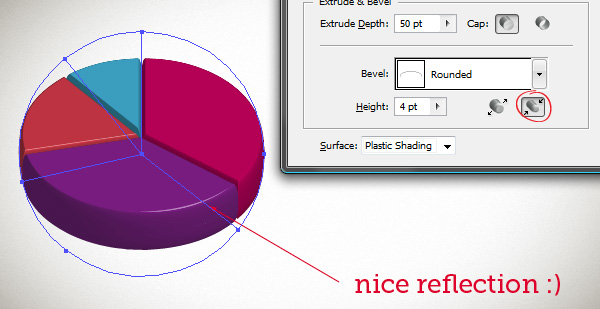
Now you can notice nice little reflections on the edges of the graph, but this is just the beginning, we’ll make it look much better.
Click the "More Options" button to expand the window and make the light configuration visible. Now add two more lights. Position all three lights and give them all the same parameters like in the picture.
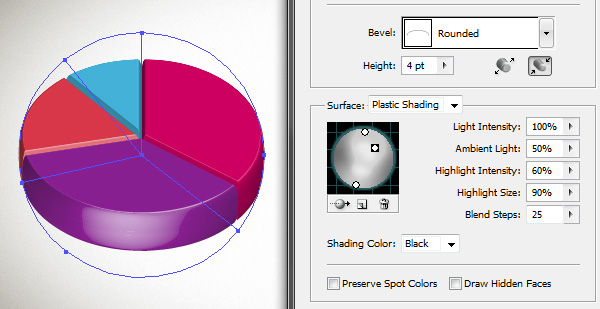
Do you notice thegorgeous big reflection on the side of our graph? It looks great, but it needs one more adjustment. If you zoom into the reflection you’ll see strangeartefacts in the color blending.
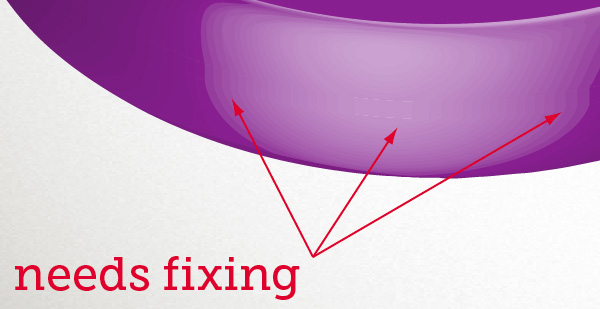
Actually it’s quite easy to fix, just go back to the Extrude and Bevel options (you have to do this by double clicking on this effect in the Appearance Panel after you select the graph) andincrease the Blend Steps parameter to 100. You mayincrease this parameter even more, but it has a great impact on the rendering time. If your computer is slow I advise you to keep the blend steps as low as possible.
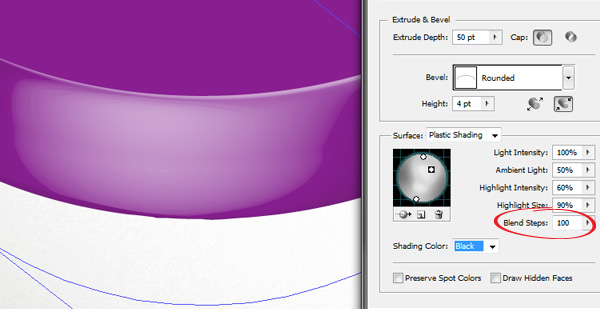
Step 2.2 (Optional)
The graph looks good andis 100% editable, you may change the numbers in the spreadsheet and it will update. This step is optional because if you want to style the graph a little more you will have to redo Step 2.2 each time you update the spreadsheet.
Duplicate the pie graph and go to its Extrude andBevel options. Change the Surface Shading to Wireframe and click OK.
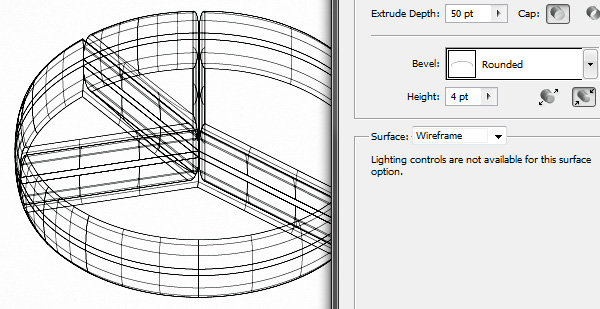
Expand the wireframe (Object>Expand Appearance) and delete every line except the top edges of the object. You should be left with something that looks like that:
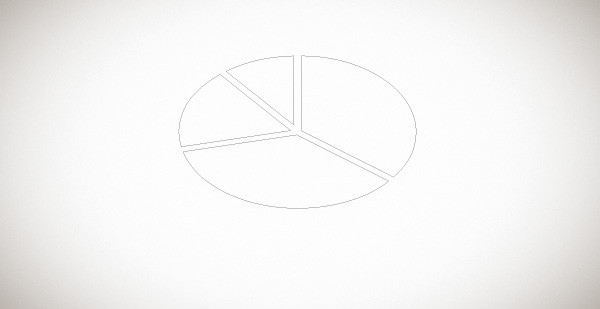
You may have to ungroup the shapes a few times (ctrl/cmd+shift+G) because Illustator tends to group objects several times after they are expanded.
Then after your shapes are ungrouped, group them, to make sure they are all in one group.
Select the shapes, give them a white, 1 pt stroke with 50% opacity.

Duplicate the whole group. Make it 100% opacity, no stoke, white fill.
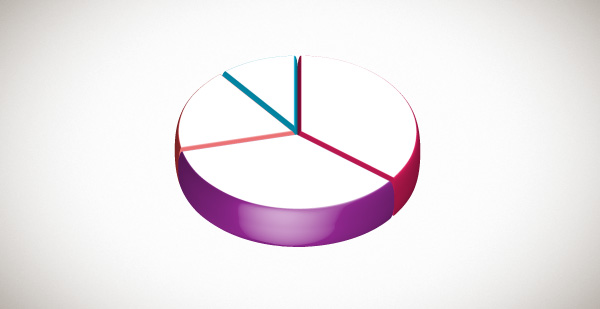
Take the rectangle tool and draw a new rectangle. Rotate and scale it like in the picture below. Fill it with white to black gradient.
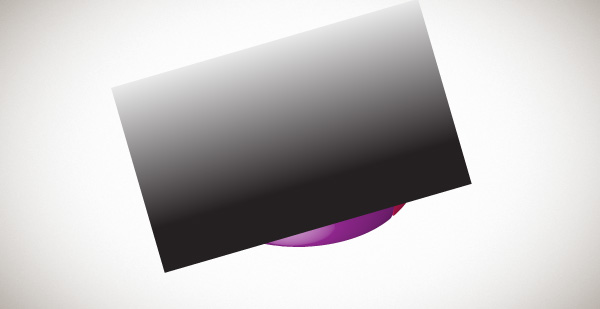
Select the rectangle and the white filled group. Go to the Transparency Panel and from the drop down menu, click "Make Opacity Mask".
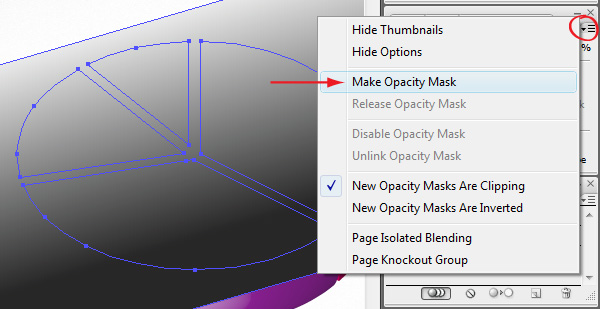
The graph is now ready Your outcome should resemble this:
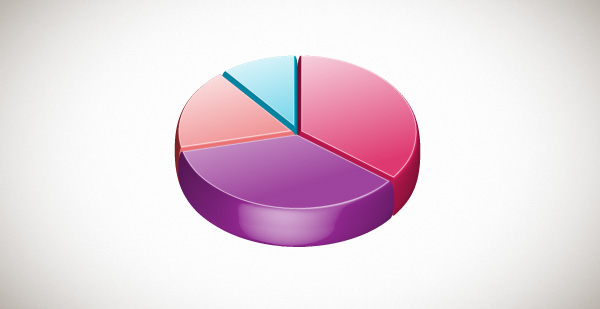
Step 3 The Line Graph
Select the Line Graph tool, draw a new graph and input data into the spreadsheet.
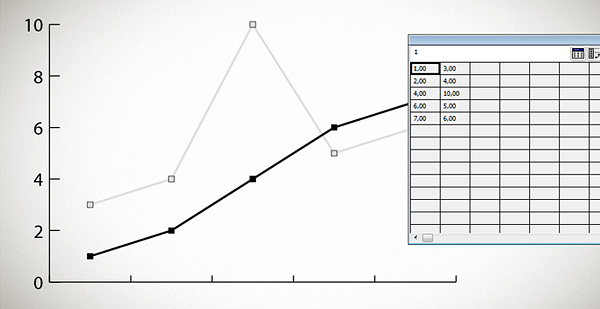
Now we will create a marker design for the graph. Markers are those little rectangles located in places where the lines connect.
Select one of the markers, copy it and paste it.
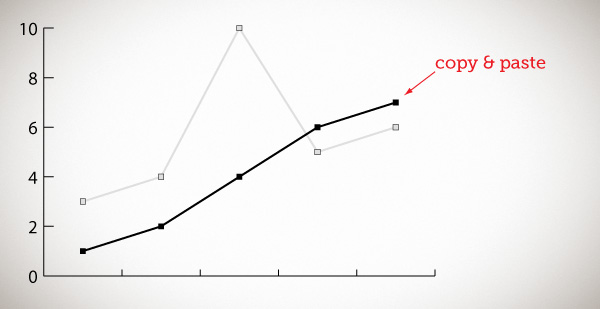
Use the Ellipse Tool to create a circle, give it a white stroke and a dark blue to light blue radial gradient. Then select the gradient tool and click on the place indicated in the picture to move the gradients centre.
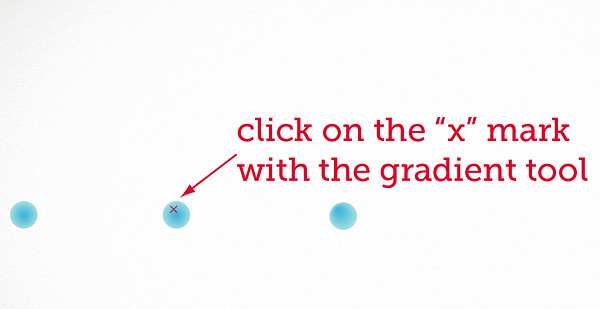
Select the circle and the marker that we copied and pasted earlier. Align them to their horizontal and verticalcentres. Select the marker and turn off any stroke or fill.
Now, this is very important, put the marker below the circle in the layershierarchy and group both objects (the circle and the marker).
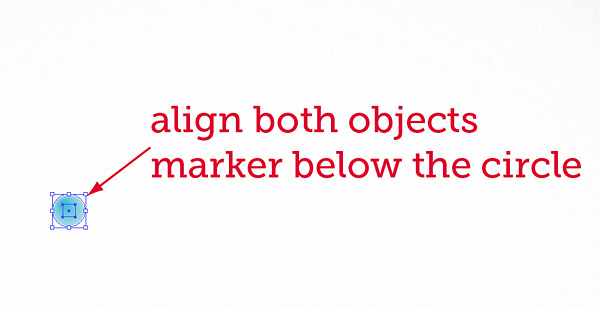
With both objects (circle and marker) still selected go to Object>Graph>Design. Click "New Design" button, your design is ready to be applied to the graph.
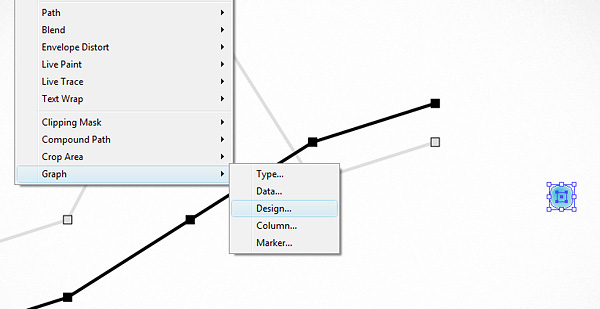
Lets use the design we just created to style our graph. Select the graph and go to Object>Graph>Marker, select your design and click OK.
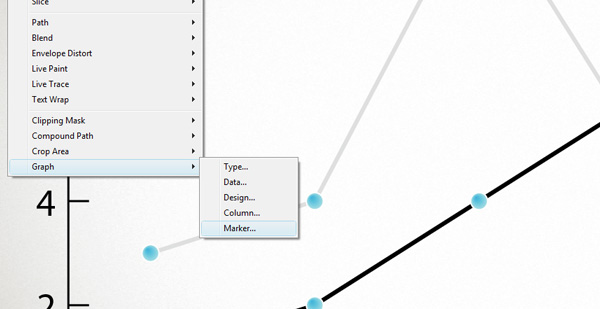
The graph is almost ready it just needs a few more tweaks. Select it and go to Object>Graph>Type. In the Graph Options select "Draw Filled Lines" and make them 3pt thick.
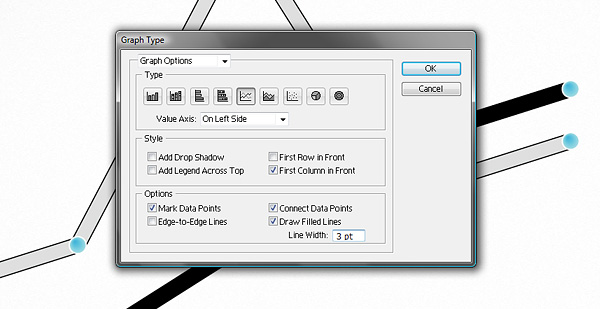
Then in Value Axis options select "Override Calculated Values" and in the Max field input a number higher than last number in your value axis. Mine is 10, so I input 12. Also select Full Width tick marks.
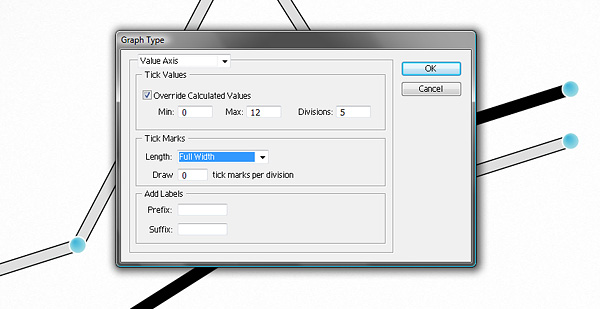
Go to the Category Axis and make it draw Full Length tick marks.
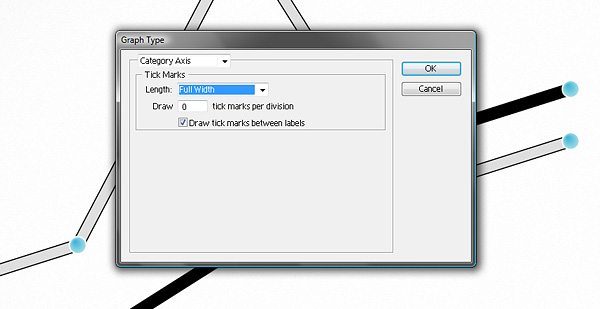
Your result should look more or less like this:
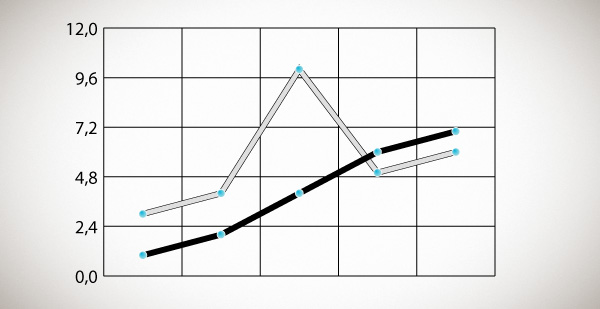
The last step is fairly simple. I played with some colours and stroke widths.Changed gradient to green on the second lines markers (I recommend using Edit Colors option in the Colour Guide panel for this), and added arrowheads to the main axes (Effect>Add Arrowheads).
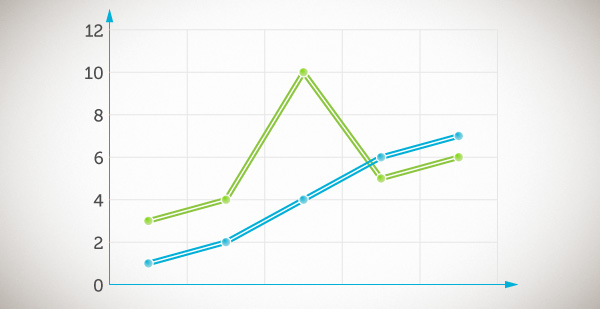
You may also apply this style to the Scatter Graph and, to some extent, the Area Graph.
This is the end of the tutorial, as you can see Illustrator is capable of producing some nice looking graphs. I encourage you to read Illustrators help files. You will find there a lot of additional info about graph tools. And as always, try to experiment and have fun.





Rất tuyệt vời
ReplyDelete